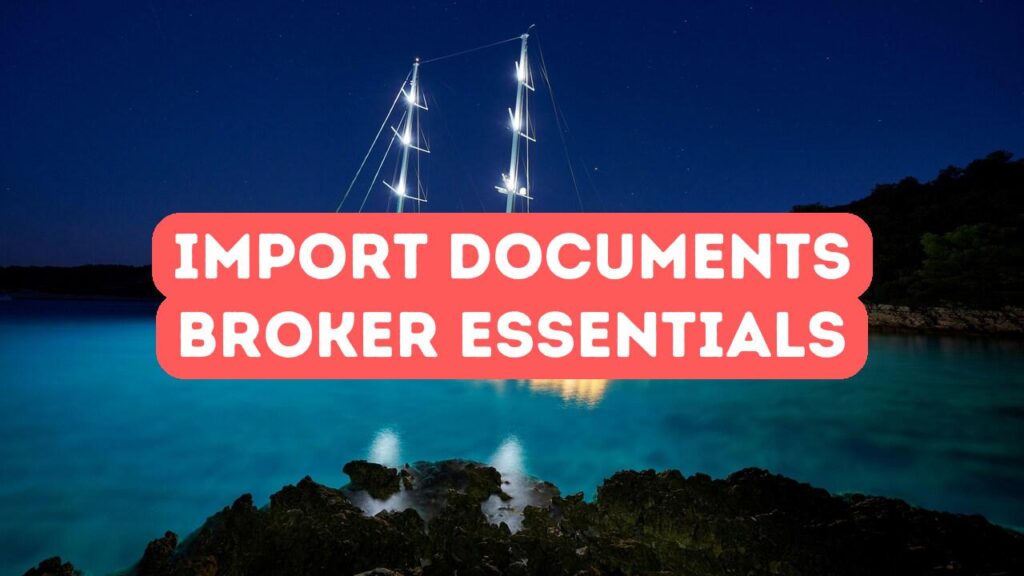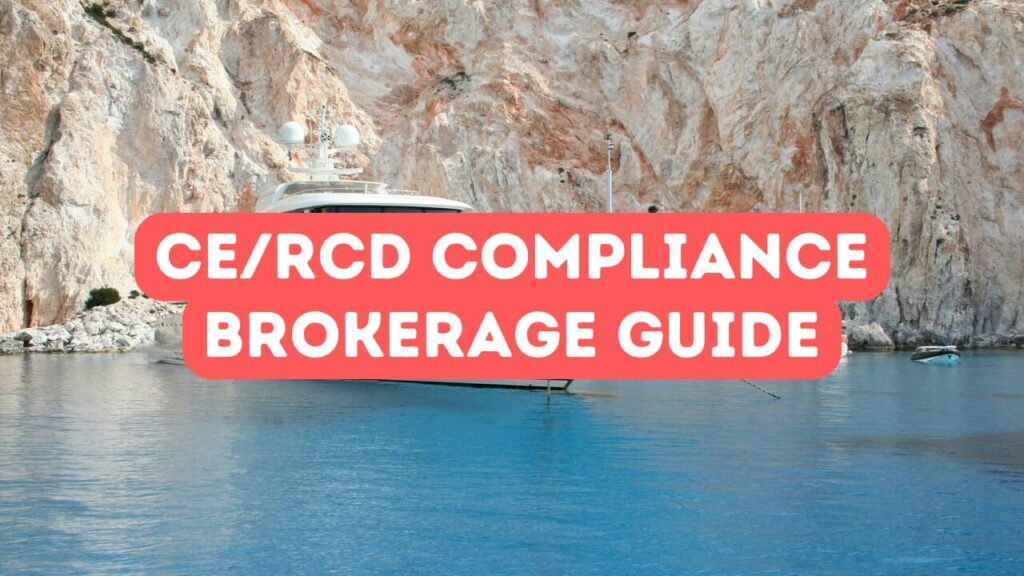Navigating the maze of import regulations can feel like trying to catch smoke with bare hands. But grasping the essential documents for imports is your torchlight through the fog. For importers, the broker’s T2L, the certificate of origin, and key import invoice tips serve as vital signposts. Every shipment is a story, and customs documentation tells a part of it. Just as a detective pieces together clues, importers must compile each document meticulously. Miss a piece, and the entire puzzle collapses. Picture the broker’s T2L as your backstage pass, while the certificate of origin acts as a provenance stamp, proving your goods aren’t impostors. With import invoice tips, ensure you dot every ‘i’ and cross every ‘t’. Achieving seamless imports hinges on precision and preparation. So, roll up your sleeves and dive deep into this world—it’s not merely about paperwork, but about ensuring your business sails smoothly.
Navigating the T2L: Key Insights for Import Brokers
Unlocking the secrets of the T2L is akin to having a magic key in the import world. This document, the broker’s T2L, acts as a bridge, confirming the duty status of goods within the EU, and is imperative in customs documentation. Import brokers must ensure it’s flawlessly prepared—like a knight polishing his armor before battle. Without precision, the T2L might seem as daunting as a locked treasure chest with no map in sight. For those dealing with essential documents for imports, understanding the T2L process is your secret weapon. Import brokers should pay close attention, dotting every ‘i’, crossing every ‘t’, so no detail goes amiss. By mastering the broker’s T2L, importers transform uncertainty into certainty, navigating smoothly through the ever-complex web of regulations. This isn’t just a form—it’s a passport for your goods.
Navigating the T2L requires more than a cursory glance; it’s an art that demands finesse and focus, much like a master chef crafting a signature dish. The essential documents for imports take center stage, with the broker’s T2L playing a lead role. Pay attention to the document’s precise details to avoid customs snags. Incorporating the certificate of origin correctly will ensure your paperwork has the authenticity stamp it desperately needs. On the other hand, import invoice tips pepper the process with insights, clarifying each fiscal nuance. For import brokers, strategic planning is non-negotiable, as each transaction hinges on thorough customs documentation preparation. Picture a seasoned captain plotting a course before setting sail—preparedness here is key. By marrying experience with these insights, importers can dance through protocols with the grace of a ballroom dancer, turning a daunting task into a seamless glide.
Understanding the T2L’s nuances is like peeling layers of an onion; each revelation brings clarity to the broader scheme of essential documents for imports. Import brokers need to keep their eyes peeled, much like a hawk hunting its prey, ensuring no detail eludes them in the broker’s T2L. Accuracy here fortifies the entire customs documentation fortress, preventing potential pitfalls. Incorporate the certificate of origin with due diligence—it serves as your goods’ birth certificate in the import realm. Lean on these import invoice tips to unravel fiscal complexities; they are the breadcrumb trail guiding you through financial nuances. A blur in these documents can stall progress like a ship stuck in a doldrum. Strategize with precision, establishing a stronghold in the procedural cadence. In mastering these hurdles, brokers transition from mere paper-pushers to navigators of a smooth import journey.
The Importance of a Certificate of Origin in International Trade
In the vast ocean of international trade, the certificate of origin is your anchor. It confirms where your goods were born, stamping authenticity on every transaction. This document is not just a piece of paper; it’s your shield against unnecessary tariffs and trade barriers. A broker’s T2L, while crucial, doesn’t stand alone. Pair it with a certificate of origin, and you’ve got a compelling duo that ensures smooth sailing. Customs officials, our gatekeepers, rely heavily on these documents, scrutinizing origin details like detectives on a case. Neglect one tiny fact, and you may face delays or heavy fees. Remember, in trade dealings, accuracy is your strongest ally. Import invoice tips are the final thread weaving the story together. With transparency at every step, you’re not just moving cargo; you’re crafting a narrative that customs officials can trust. The certificate of origin is your passport; wield it wisely.
In international trade, the certificate of origin is more than a document—it’s the key to unlocking preferential treatment across borders. When goods travel across countries, this certificate serves as their identity card, detailing their birthplace. It becomes crucial in light of trade agreements, sparing businesses from unnecessary tariffs and turning the tide in competitive markets. Imagine it as a compass guiding your shipment through the legal labyrinth of international commerce. Customs documentation demands clarity, and a pristine certificate of origin satisfies that call. A broker’s T2L complements this, fortifying your trade vessel against unforeseen challenges. Armed with solid import invoice tips, your business narrative becomes airtight, leaving no room for doubt. Every document, each detail adds to your credibility. The certificate of origin stands as the cornerstone of essential documents for imports, ensuring that your goods navigate seamlessly across global trade routes.
A certificate of origin is like a secret handshake in international trade, opening doors and reducing hurdles. Secure this document, and you effectively bypass many pitfalls that might surprise unwary importers. It stands as an authoritative seal, attesting to your goods’ origins, and becomes your answer to queries from customs officials. Without it, you risk stumbling into the quagmire of delays and penalties, which could tarnish your enterprise’s reputation. However, it’s not all gloom and doom. Think of the certificate as your trusty lantern, illuminating the often shadowy path of customs documentation. Alongside the broker’s T2L and guided by solid import invoice tips, it ensures your business skips over unnecessary barriers. Being diligent with these essential documents for imports protects your interests, paving the way for smooth transactions and solidifying your standing in the bustling arenas of global trade.
Maximizing Efficiency: Best Practices for Invoice Preparation in Imports
Crafting your invoice with pinpoint accuracy is like laying the foundation of a sturdy bridge—the strength of each section determines the smooth passage of goods. First off, align your approach using precise import invoice tips. Consider each line item as a vital thread woven into your essential documents for imports. Misstep here, and even the most seasoned broker’s T2L won’t cover the void. A crisp, detailed invoice is your ally in customs documentation, orchestrating a symphony that proves your business efficiency. The careful articulation of descriptions, values, and terms can ease the scrutiny of customs officials. Remember, the certificate of origin and invoice need to dance in perfect sync, reflecting authenticity. This thoroughness doesn’t just help navigate regulatory waters; it anchors trust with global partners. Embrace these practices, and watch as your imports glide through with the grace of a well-oiled machine.
Maximizing efficiency in invoice preparation starts with a laser focus on detail, akin to tightening the sails before navigating turbulent seas. Essential documents for imports demand invoicing precision as a non-negotiable element in customs documentation. Begin by ensuring every figure, description, and code stands as solid as a beacon. Use broker’s T2L tips to cross-verify your entries; each marks a step toward smoother import pathways. The certificate of origin plays a pivotal role here, securing the legitimacy of your cargo—a safeguard against misunderstandings. With import invoice tips at your disposal, transform each line into a declaration of authenticity and compliance. Consider the invoice an overture, setting the rhythm for the customs documentation process. When aligned correctly, these practices shield your transactions from turbulence, fostering harmony in international trade relations. As you refine these elements, witness imports move seamlessly, much like a ship cutting through calm waters.
When turning the spotlight on invoice preparation, envision every step as building blocks of a bridge that’s as solid as the Rock of Gibraltar. First, secure the foundations using your arsenal of import invoice tips, a bedrock for accuracy and clarity. This process demands more than just a cursory glance; it’s about aligning every detail with a jeweler’s precision. Employ broker’s T2L insights to illuminate the path, ensuring that every entry on your invoice is bulletproof in customs documentation. The certificate of origin must not be an afterthought—its role is crucial in corroborating the identity of your goods, kindling trust in your trade partners. Allow each facet of your invoice to paint a picture of impeccability, where efficiency and compliance are not just buzzwords but a reality. As you weave these elements meticulously, you’ll find your import process flowing effortlessly, steering your endeavors toward new horizons with ease.
Disclaimer: This article is for general informational purposes only and you are strongly advised to consult a professional to evaluate your personal situation. No liability is accepted that may arise from the use of the information in this article.






